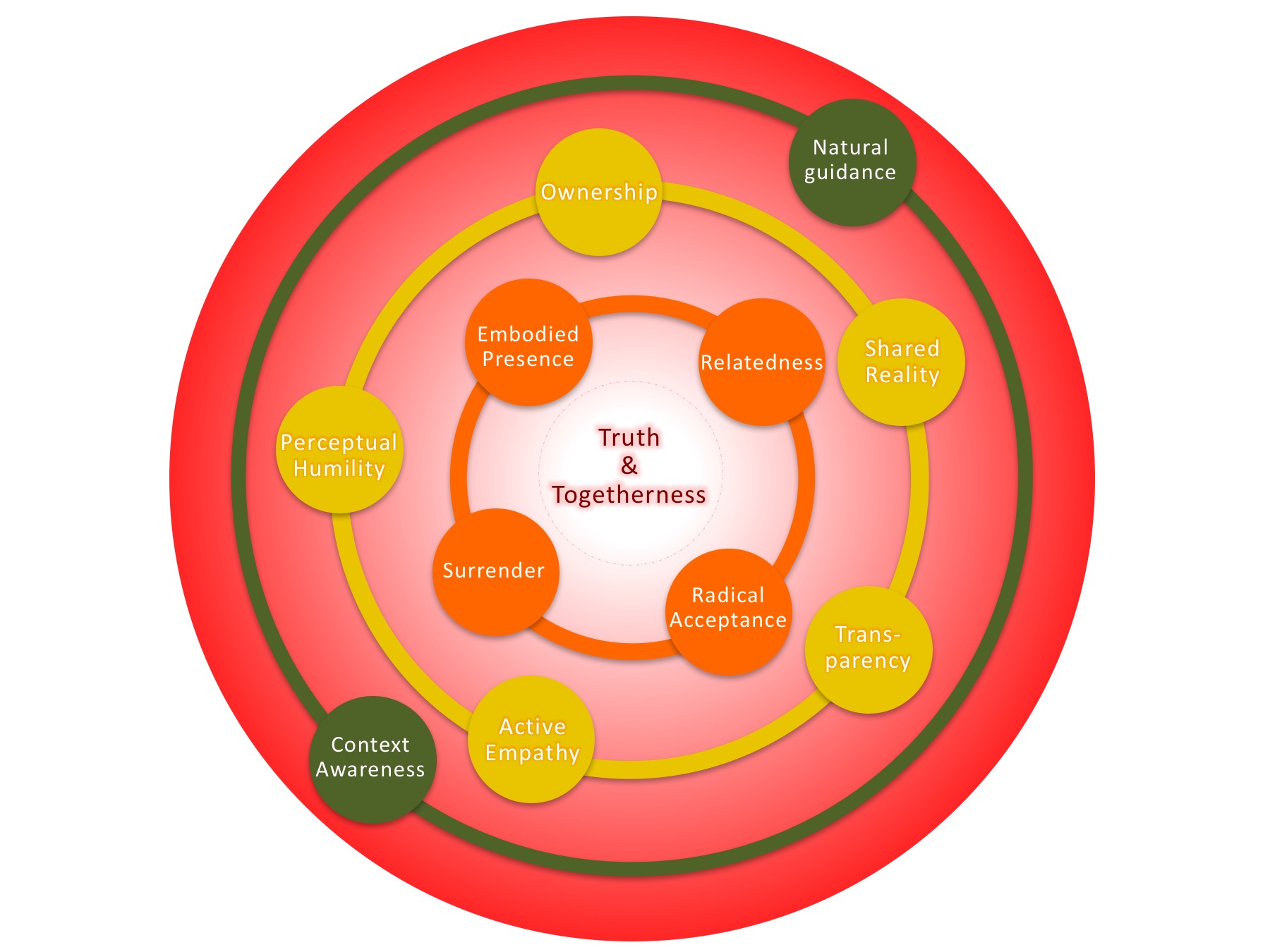To practice Circling, we start with the intention of getting more in touch with
1) the Truth of what’s really here (ie. insight), and
2) our experience of Togetherness (ie. awareness of connection).
(Note: Togetherness does not necessarily mean harmonious interactions. It is simply the experience of being very aware of the quality of relationship with one another, and can include a variety of relational dynamics.)
This is our goal: to experience both Truth and Togetherness in perfect balance, neither one at the expense of the other.
(continued below)

Favouring only Truth, we may discover plenty, but the conversation will probably feel like psychoanalysis or interrogation and lead to emotional closure, ironically putting a limit how much can be discovered.
Favouring only Togetherness, we may have a nice experience, but the connection will probably feel hollow as we miss opportunities to really know each other and talk about what’s really happening, ironically putting a limit on how close we can feel to one another.
With this intention towards more Truth and Togetherness, we begin a Circling conversation based in eleven principles, each one meant to deepen our experience of Truth and/or Togetherness.
The inner ring in the diagram forms the non-verbal foundation of the practice. The middle ring represents the details of interaction. The outer ring finishes with elements of masterful facilitation.
Here’s are the principles (in the order in which they are taught), starting from the inner ring.
|
Principle
|
How to Practice
|
|
|
First-Tier Principles (Orange): Embodiment
|
|
Embodied Presence
|
Root your attention into this moment through your sensations and senses.
|
|
Relatedness
|
Bring awareness to your relationship with the other(s), through attention on connection, I-thou relating, and being permeable to others.
|
|
Radical Acceptance
|
Welcome everything—as it is—in yourself and others, including any desire for change
|
|
Surrender
|
Relax out of striving, pushing, or holding-on to achieve something or get somewhere.
|
|
|
Second-Tier Principles (Yellow): Engagement
|
|
Perceptual Humility
|
Notice where you’re making assumptions or assertions, and allow the possibility that you are mistaken.
|
|
Ownership
|
Acknowledge and accept as yours those things you bring to a situation that affect what you experience, say, and do (e.g. your feelings, thoughts, motivations, vantage point, agency, parts, etc.) |
|
Shared Reality
|
Speak what’s occurring in the other, yourself, and context, so that we’re all on the same page about what’s happening
|
|
Transparency
|
Share what’s alive that has your attention within you.
|
|
Active Empathy
|
Take on others’ perspectives, inhabiting their world(s)—feeling it deeply with them—while maintaining your sense of self.
|
|
|
Third-Tier Principles (Green): Leadership
|
|
Context Awareness
|
Sense and track what’s happening, how it’s happening, and why.
|
|
Natural Guidance
|
Trust and follow where you’re naturally drawn
|